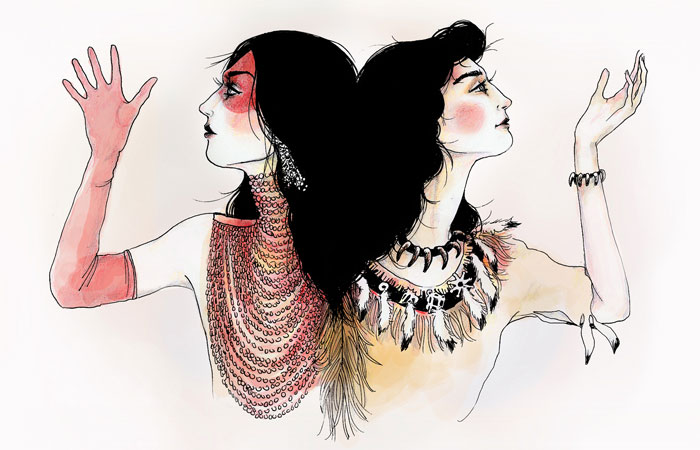Rereading Pauline JohnsonPosted in Articles, Canada, Literary/Artistic Criticism, Media Archive, Women on 2013-08-06 05:11Z by Steven |
Journal of Canadian Studies/Revue d’études canadiennes
Volume 46, Number 2, Spring 2012
pages 45-61
DOI: 10.1353/jcs.2012.0018
Carole Gerson, Professor of English
Simon Fraser University, Burnaby, British Columbia, Canada
This essay argues for a broader appreciation of Pauline Johnson’s creative range and poetic accomplishment. Rereading her work in relation to some of J. Edward Chamberlin’s ideas about narrative and about home brings fresh perspectives to her writing and reception in relation to her reversal of the White masculine gaze in her representations of Native peoples, Canadian history, wilderness, and gender. Her first Euro-Canadian audience used her work to assist with their own indigenization and help them feel at home in Canada. Because most current readers construct Johnson as figure of resistance, concentrating on a small selection of her poetry on Native topics, they continue to ignore her poems that invoke a female voice to possess the wilderness, along with her innovative erotic verse that reinhabits the female body by empowering the female gaze.
Having written extensively about Pauline Johnson in the past—most recently in relation to celebrity (Gerson 2012)—I welcome the opportunity created by this collection of essays associated with the Grand River Forum to bring some of J. Edward Chamberlin’s observations about storytelling to bear on my current interest in returning approaches to Johnson. My goal is to bring fresh attention to the craft and range of her poetry and to the complexity of her reception. Chamberlin’s analysis of narrative as essential to human experience, however contradictory the stories on a given topic might seem, is amply borne out by the unusual life and career of Emily Pauline Johnson (1861-1913). The well-known part-Mohawk poet was closely associated with the Grand River region, where she honed her skills in canoeing and authorship, her talents converging in…
